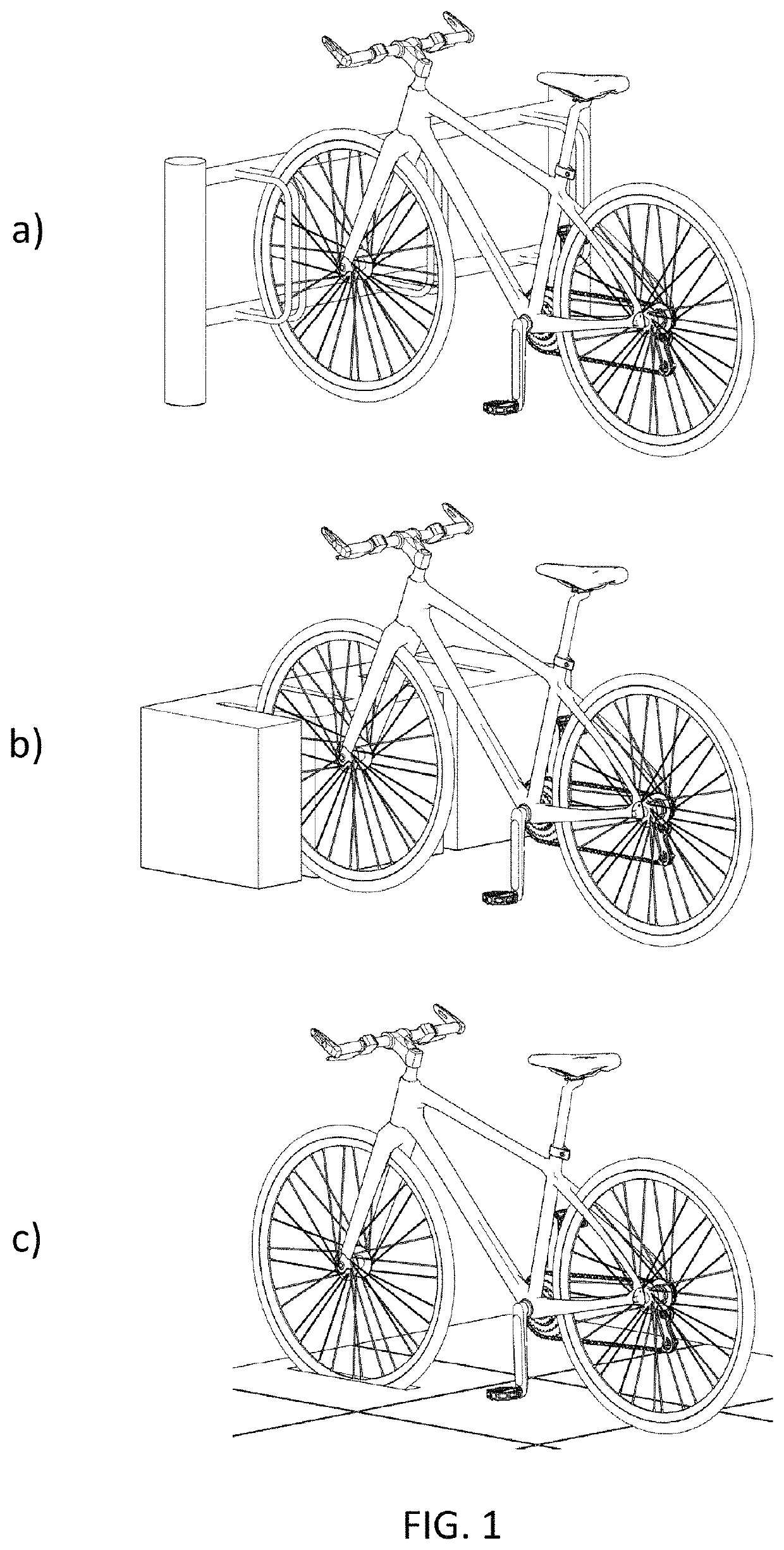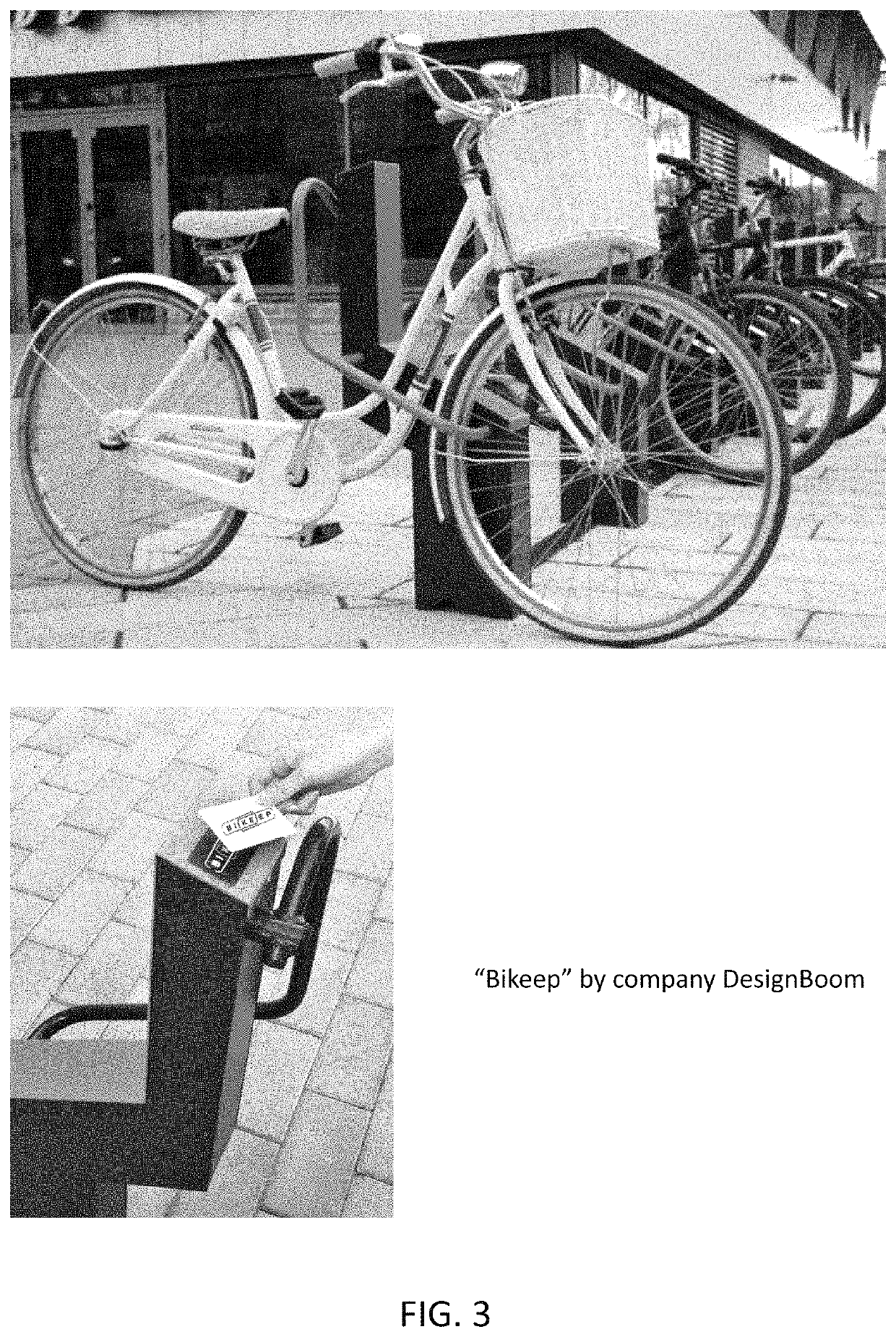Bicycle parking stand for locking a bicycle to the stand comprising an electronic lock
a technology for parking stands and bicycles, applied in the direction of bicycle stands, anti-theft cycle devices, cycle equipment, etc., can solve the problems of bicycle theft, wire or u-lock, and the inconvenience of having to bring a heavy and costly chain,
- Summary
- Abstract
- Description
- Claims
- Application Information
AI Technical Summary
Benefits of technology
Problems solved by technology
Method used
Image
Examples
Embodiment Construction
[0095]FIG. 4 through FIG. 19 illustrates present invention. FIG. 4 through FIG. 10 presents one embodiment and FIG. 11 through FIG. 17 presents another embodiment. FIG. 18 and FIG. 19 illustrates present innovation utilized in parking lot solutions.
[0096]FIG. 4 illustrates one embodiment of present invention in open mode ready for a bicycle to be parked. Open mode achieved by gate (E) and comprised striker-plate (F) turned through hinges (D) to a position where gate (E) is parallel to side wall (20) of said bottom section (A). Figure shows vertical side walls (10) and (20) and back wall (30) of bottom section (A) which directly or through a base is affixed to the ground or pavement. Figure also shows fender (L) fixed to the top front corner of side wall (10) and fender (K) also fixed to said side wall (10) but below fender (L).
[0097]Figure further shows top section (B) and comprised fender (M) fixed to the flexible section (40) of said top section (B). Flexibility of section (40) an...
PUM
 Login to View More
Login to View More Abstract
Description
Claims
Application Information
 Login to View More
Login to View More - R&D
- Intellectual Property
- Life Sciences
- Materials
- Tech Scout
- Unparalleled Data Quality
- Higher Quality Content
- 60% Fewer Hallucinations
Browse by: Latest US Patents, China's latest patents, Technical Efficacy Thesaurus, Application Domain, Technology Topic, Popular Technical Reports.
© 2025 PatSnap. All rights reserved.Legal|Privacy policy|Modern Slavery Act Transparency Statement|Sitemap|About US| Contact US: help@patsnap.com



